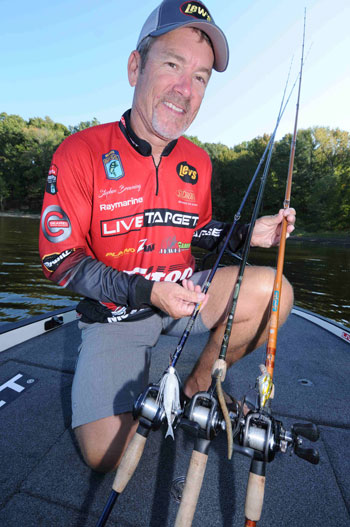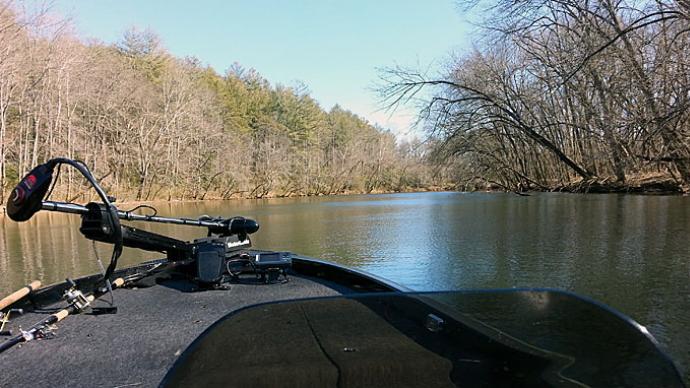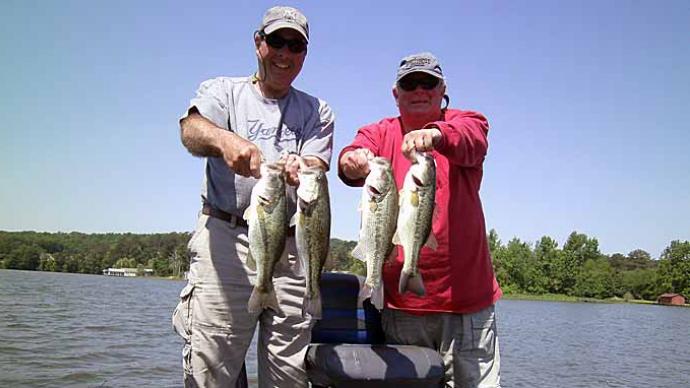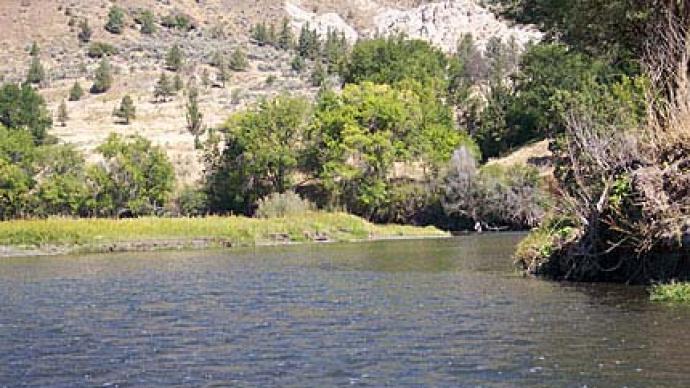
Stephen Browning knows how to catch river bass.
That is stating the obvious, considering he has won two Bassmaster Opens on the Red River in Louisiana and won the 1996 Red Man All American on the Arkansas River.
The Arkansas pro knows the nuances of river bass fishing by adjusting to changing water levels and current speed conditions. Here’s a look at his three favorite lures for catching bass during various river stages throughout the year.
Squarebill Crankbait
Browning considers the squarebill his number one river bait for most situations. “You can fish it on sand, wood, and rock, and that is the habitat where you will find the bass,” he says.
The time of year and current will tell him what type of cover he needs to target for river bass. “In winter and spring, they are hanging more around rocks on the back side of jetties kind of out of the current and even in the little backwaters right off the river,” he says. During late spring and summertime, bass will move to the main river and relate to rock walls, riprap, channel swings, and wing dams breaking the current.
The size of the crankbait Browning selects depends on the section of the river he is targeting. “If I am fishing the main river or out towards the main river, the 1.5 series tends to be the best overall size,” he says. “Once I get into the backwater, and I may be targeting wood and stumps, I will go up to the 3- or 3 1/2-inch squarebills,” Browning notes he will usually catch bigger fish holding on isolated cover rather than numbers of bass when he throws the larger squarebill.
The river expert narrows his lure color choices to two patterns: black back/chartreuse sides and black back/pearl sides. He throws the black-and-chartreuse model in dirty water and the black-and-pearl version in clearer water.
Browning varies the retrieves of his squarebills while cranking the lures on a 6-foot, 10-inch St. Croix Legend Glass medium rod and Team Lew's BB1 Pro Speed Spool baitcast reel (6.2:1 gear ratio) with 16-pound Gamma Edge Fluorocarbon line. “If I am fishing strictly riprap, then I will use more of a steady retrieve trying to get that bait down to bounce it off the rocks,” he says. When bass are holding on sandbars during the summer, Browning employs a high-speed retrieve or a stop-and-go presentation.
Bladed Jig

The four-time B.A.S.S. winner will throw a Z-Man ChatterBait Jack Hammer bladed jig in the same areas where he works his squarebills. “I tend to use it a little bit more around wood, so it bounces over the top of the wood,” he says. Browning uses the ChatterBait more in the fall on main river wood.
The ChatterBait is also Browning’s choice for tossing around shallow willow weeds. He relies mainly on a 3/8-ounce bladed jig for running in the shallow grass but will occasionally use a 1/2-ounce model for fishing deeper around rocks and sandbars. The tournament competitor adds a Z-Man Diezel Minnow as a trailer when he wants to fish his ChatterBait faster and higher in the water column. He switches to a ZMan Razor Shadz as a trailer for fishing the ChatterBait slower and deeper.
Water clarity and the forage bass are feeding on dictates Browning’s color choice for the ChatterBait. He opts for green pumpkin when fishing clear water or when he notices bass are feeding on bluegill. White is his choice when fishing dirty water, and bass are munching on shad.
A steady retrieve produces best for Browning when he wants to deflect his ChatterBait off of wood or rocks. He also uses a steady retrieve with occasional quick turns of the reel handle to vary the speed of his ChatterBait when fishing sandbars or around aquatic vegetation. He presents his ChatterBait with either a 7-10 heavy St. Croix Legend Tournament rod (for longer casts) or 7-0 medium heavy Legend Tournament rod (for pinpoint casting) with the Team Lew’s BB1 reel and 14- to 20-pound Gamma Edge Fluorocarbon.
Stick Worm
Browning prefers a Z-Man Zinkerz stick worm for flipping to wood or grass. “I can fish that bait on a variety of weights depending on the current and the rate of fall I am looking for,” he says. A 3/16-ounce worm weight is Browning’s pick for fishing in light flow, and a 5/16-ounce weight works best for him in a stronger current.
Most of the time, Browning favors a Zinkerz in a black/blue laminate hue. He also opts for a green pumpkin or dirt hue for fishing in clear water.
Browning flips the bait to cover most of the time, and most bites occur on the initial fall. If the lure reaches the bottom, Browning will impart some action to the lure then. “I may pump it a couple of times, and if there is no reaction, I will reel it back in and just try to cover water with it,” he says. Sometimes he will crawl the lure along the bottom by making half turns with his reel handle.
His gear for flipping the Zinkerz consists of a 7-6 medium-heavy St. Croix Legend Elite rod and Team Lew’s Hypermag Speed Spool baitcast reel (8.3:1 gear ratio) with 16- to 20-pound Gamma Fluorocarbon or 50-pound Gamma Torque Braided Line (for fishing thick weeds).
BassResource may receive a portion of revenues if you make a purchase using a link above.




